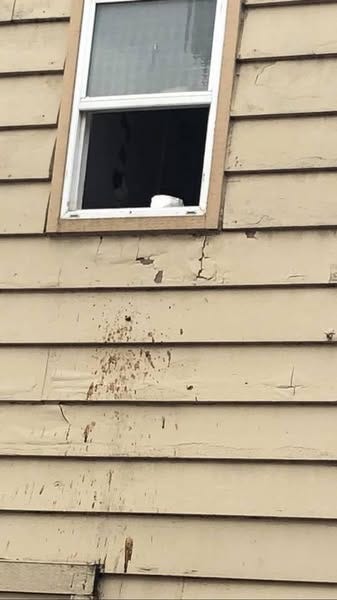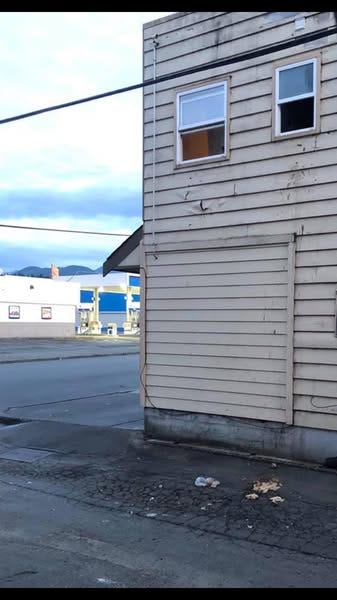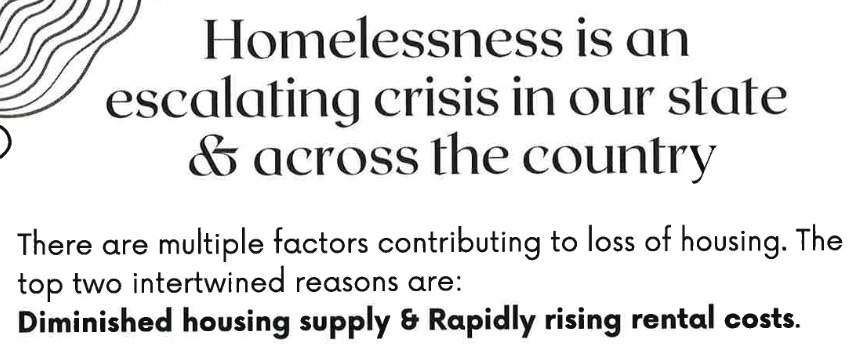Fifteen years into the ten-year plan to end homelessness
New plan ignores addiction and taxpayer burden
Fifteen years after Clallam County pledged to end homelessness, rates are rising, accountability is absent, and drug addiction is ignored as a root cause. A new plan pushes for equity and more housing—but critics say it rewards providers over progress, excludes key voices, and burdens taxpayers.

In 2010, the Clallam County Homelessness Task Force stated clearly: “The success of the Clallam County 10-Year Plan to End Homelessness hinges on accountability.” Yet fifteen years later—after two iterations of "10-year plans"—homelessness in Clallam County has increased, accountability remains elusive, and meaningful public engagement is minimal.
Yesterday, the Clallam County Commissioners (minus Commissioner Ozias, who was absent) heard a presentation on the County’s latest Homeless Housing Plan. Developed by a consultant and a workgroup of task force members and partners, the plan was approved by the Homelessness Task Force and advanced for commissioner review. According to state law, such plans must be updated every five years and include goals, strategies, performance measures, and timelines to eliminate homelessness.
Despite that requirement, the County is seeing the opposite result. The 2024 metrics show a 25% increase in homelessness in Clallam County from the previous year. Consultant Paul Knox stated that over the next five years, the County will need 110 new shelter beds, 188 new supportive housing beds, and 417 new housing units. Serenity House in Port Angeles—a low-barrier shelter that tolerates drug use—was noted to have a “pretty high vacancy rate,” indicating that not all shelters are currently being utilized. While shelter staff cite rule violations as the cause, others allege mismanagement.
Serenity House once operated “The Tempest,” a low-barrier, short-lived permanent housing facility that shut down due to high crime (328 police calls in two years), drug and alcohol use, and arson.


The current draft plan does not name substance abuse as a cause of homelessness. It instead attributes the issue to housing shortages, rising costs, and “historical impacts of systemic discrimination.”
Meanwhile, the Task Force’s definition of public engagement includes a newspaper notice in 2024, a single two-hour focus group with seven individuals experiencing homelessness, and an upcoming public hearing on May 27, 2025. Despite these limited efforts, the plan states: “We invite all members of the community—residents, leaders, organizations, and advocates—to take part in this work... Let’s work together to turn these strategies into outcomes and build a future where homelessness is no longer a defining challenge in Clallam County.”
The Task Force’s five main objectives are worth examining:
Promote accountability and transparency through crisis response systems like a “safe parking” program at Trinity United Methodist Church in Sequim. However, this program excludes men and men with children, raising questions about how “equitable” the services truly are.

This safe parking program will cost taxpayers $100,000 over two years for 3-5 parking spots. Strengthen the homeless services network by offering provider perks such as gym memberships, mental health support, and retention bonuses—without any metrics to determine if those services lead to actual reductions in homelessness.
Prevent homeless episodes through employer recruitment, rent stabilization, eviction prevention, and "Renting 101" classes. However, rent control—if implemented—could drive small landlords out of the market and into short-term rentals, potentially worsening the housing shortage.
Prioritize assistance based on vulnerability, especially for LGBTQ+ and Native American/Alaskan Native populations. But some community members argue that such prioritization effectively pushes others, like straight white males, to the back of the line.
House everyone in stable settings by creating landlord incentives. Yet it remains unclear how this will coexist with policies like rent control and expanded tenant protections that make landlord participation more difficult.
Consultant Paul Knox encouraged partnering with Seattle-based nonprofits, despite Seattle’s worsening housing crisis over the past decade. Commissioner Randy Johnson expressed skepticism over the lack of a funding strategy: “When I ran for commissioner, I wanted to help solve the homelessness issue. Unfortunately, it’s going the other direction... which is really scary to me—especially for older people, age 55 and up, many of whom are on Social Security.”
Commissioner Mike French, for his part, said success hinges on building more “cheap housing units.” Yet just this week, commissioners approved another $524,860.49 in public funding for a $12.75 million Peninsula Behavioral Health luxury homeless permanent housing complex, with an average unit cost of $350,000—raising eyebrows about the definition of “cheap.”
As this plan moves toward formal adoption, Clallam County residents still await meaningful discussion about root causes—particularly substance abuse—and clearer accountability for progress.
The public hearing on the draft plan will be held on May 27, 2025. Residents are encouraged to attend and weigh in (the hearing will likely be during the weekly Commissioners’ meeting on Tuesday at 10:30 am).
One final note: this week alone, two more properties are being considered for transfer into tribal trust status, exempting them from local property taxes. As these tax-exempt parcels increase, so too does the pressure on remaining taxpayers—widening the gap in housing affordability and undermining the very systems tasked with addressing homelessness.
The first parcel is a small segment of the Olympic Discovery Trail that contributes $146 annually in property taxes.
The second parcel, at 85 East Silberhorn Road in Sequim, currently generates $4,331 in annual property taxes. If transferred into tax-exempt trust status, that burden shifts to other taxpayers—including $156 for libraries, $404 for the hospital district, and $2,004 for local schools.
As is standard procedure, the Bureau of Indian Affairs invites County Commissioners to comment on how land-into-trust conversions affect our economically struggling county. Yet to date, the Commissioners have never submitted a response.
Also, Peninsula Behavioral Health has invited the community to take a “Community Needs Assessment Survey for Stakeholders.” Take the survey here.















BS! The entire homeless issue is a vast money-laundering scheme to enrich politicians at our expense. Think about it: Every major city has a homeless issue, yet none declare "NO CAMPING WITHIN CITY LIMITS" to make it inconvenient for the homeless. Instead, they provide food, syringes, and instructions on how to take their drugs through their rectums. Why? Why have NONE of these cities solved the problem? Hello-- because they don't WANT to. They get the naive voters to open their bleeding hearts to increasingly fund these enabling programs, while the politicians get rich.
The Clallam County Homelessness Task Force says, "We believe [that] access to housing is a basic human right". Then why do the rest of us all have to work hard for it? Why don't we all stop working and let Clallam County provide luxury apartments and free pizza for us? Why work at all? No, I am not heartless, but crippled people and those UNABLE to work may warrant society's collective help, but most of these homeless miscreants are because it's a lifestyle they CHOSE. They answered the question "Why work at all?" with a resounding "Because I would rather coast, high on drugs, man. It's easier than working for the man, man." And we, they naive, agree to programs that enable them. We make it EASY for them to adopt this lifestyle, even removing the stigma from it by legitimizing it. It's bullshit! Don't make it easy for them; make it hard, painful, uncomfortable for them. We are all motivated by something to be productive in society. The bums need motivation too. If a carrot doesn't work, a stick will.
Let them experience withdrawal. Let them experience cold, wet, life in the woods (not cities or suburbs). Let harsh reality be their motivator, if success doesn't work for them. If anything, society should provide alternatives, like picking up litter along our highways in exchange for food, a cot space within a warehouse. Make their life choice the most inconvenient choice they've ever made. Give them alternatives, but NOT handouts, shelters, drugs, or other things to legitimize their choices.
When non profits use homelessness as a federal money grab and continue to give excuses for homelessness then it will never end in Clallam County. It began with these nonprofits lying to the public and community leaders as to whether it was locals or outsiders that were sleeping on our streets and in our parks. They convinced the public they were locals. Anyone who was raised here knew they were not locals. When you offer food, tents, sleeping bags free. Feed them and they will come.”
We are overrun with outsiders and their broken down motor homes,vans and cars. Crime has risen ( property crimes and assaults). People are afraid to walk in certain parts of town and you don’t dare walk anywhere at night.
Stop Services, offer services to families in cars, Youth and Veterans. Local people know where to go for help. But to poor millions of dollars into transients and think they are going to stay here and become upstanding citizens is a pipe dream. “ The more we give, the more we’ll get.”
People are fed up, and very tired of being called evil because they’re not willing to help their fellow man. “ God helps those who help themselves”. He didn’t mean Clallam County pouring millions into a bottomless pit!